 W
WAim for the Ace!, known in Japan as Ace o Nerae! , is a manga series written and illustrated by Sumika Yamamoto. The series tells the story of Hiromi Oka, a high school student who wants to become a professional tennis player as she struggles against mental weakness, anxiety and thwarted love. It was originally serialized in Shueisha's shōjo magazine Margaret from January 1973 to February 1980. Later, Shueisha collected the chapters and published them in 18 tankōbon volumes.
 W
WAnnet Futatabi is a side scrolling, beat-em-up video game developed and published by Wolf Team for the Mega CD hardware add-on for the Mega Drive. It is the final in a trilogy of games that also includes Earnest Evans and El Viento. The game was released only in Japan in 1993.
 W
WArcus II: Silent Symphony is a computer game developed and released in Japan by Wolf Team. Narumi Kakinouchi, co-creator of Vampire Princess Miyu, was the art director for this game. The music for the game was composed by Masaaki Uno, Motoi Sakuraba, and Yasunori Shiono.
 W
WArcus Odyssey is an action game video game developed by Wolf Team and released by Renovation Products in 1991 for the Sega Mega Drive/Genesis and Sharp X68000 and in 1993 for the Super Nintendo Entertainment System. The game features an isometric perspective and cooperative gameplay, as well hack and slash gameplay. It tells the story of four heroes trying to thwart the return of an evil sorceress.
 W
WCobra Command, known as Thunder Storm (サンダーストーム) in Japan, is an interactive movie shooter game originally released by Data East in 1984 as a LaserDisc-based arcade game. Released as an arcade conversion kit for Bega's Battle (1983), Cobra Command became one of the more successful laserdisc games in 1984. A Mega-CD port of Cobra Command developed by Wolf Team was released in 1992.
 W
WDeath Bringer, alternatively titled Galdregon's Domain in Europe, is a 1988 role-playing video game originally developed and self-published by Pandora and released for the Amiga, Atari ST, Commodore 64, TurboGrafx-CD, and Sharp X68000.
 W
WDino Land is a pinball video game developed by Wolf Team for the Sega Mega Drive/Genesis. It was released in 1991 in North America and Japan.
 W
WEarnest Evans is a 1991 action platform game which was released in Japan for the Sega Mega-CD, and in North America for the Sega Genesis. The game was developed and published by Wolf Team in Japan, and was published in North America by Renovation. As with Sol-Feace, the Mega-CD release has a Mixed Mode CD soundtrack along with animated cutscenes created by Madhouse. It is the second story in a trilogy of games which include El Viento and Anett Futatabi.
 W
WEl Viento is a platform game developed and published by Wolf Team for the Sega Genesis game console in 1991. It is the first in a trilogy of games, which includes Earnest Evans and Anett Futatabi.
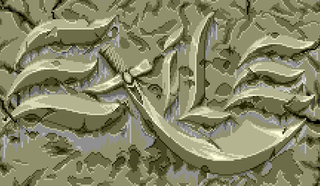 W
WExile (エグザイル, Eguzairu, originally stylized XZR) is an action role-playing video game series developed by Telenet Japan. The first two games in the series, XZR and XZR II were both released in Japan in 1988, with versions available for the NEC PC-8801, NEC PC-9801, MSX2 and the X1 turbo (for the first game only). In 1991, a remake of XZR II simply titled Exile was released for the PC Engine and Mega Drive. These versions were both released in North America the following year, with Working Designs handling the localization for the TurboGrafx-CD version, while Renovation Products published the Genesis version. A sequel exclusive to the Super CD-ROM2 format, titled Exile: Wicked Phenomenon, was released in 1992, which was also localized by Working Designs for the North American market.
 W
WFinal Zone is an isometric mecha shooter game created by Wolf Team for Telenet Japan and its Renovation Products subsidiary in 1990. Players take on the role of a mecha operator outfitted in the NAP suit. The NAP suit can carry 14 weapons out of the 20 available weapons and it is up to the player to use them to their maximum benefit.
 W
WGaiares is a horizontally scrolling shooter developed by Telenet Japan and published by Renovation for the Sega Genesis in Japan and North America in 1990. It was one of the first 8Mb cartridge games on the Genesis. Its title combined Gaia and the suffix "less" (Res), as the Earth has been lost to pollution in the far future according to the game's plot.
 W
WGranada is a shooter video game developed and originally published by Wolf Team exclusively for the Sharp X68000 in Japan on 20 April 1990. The ninth title to be created and released by Wolf Team for the X68000 platform, the game is set on a futuristic Africa in 2016 where a war erupted over mining rights towards rare metals and has quickly escalated due to newly-introduced weapons called Maneuver Cepters, as players assume the role of mercenary Leon Todo piloting the titular Maneuver Cepter tank unit in an attempt to stop the conflict once and for all. Its gameplay mainly consists of action and shooting mixed with mission-based exploration using a main two-button configuration.
 W
WHiōden: Mamono-tachi tono Chikai is a video game that was published in 1992 by Telenet Japan and developed by their Wolfteam subsidiary. It was released on the NEC PC-98 in the same year. The game was later ported to the Super Famicom in 1994. Its subtitle could be translated as "Legend of the Scarlet King".
 W
WJennifer Capriati Tennis is a Sega Genesis video game developed by System Sacom and released in 1992. In 1994 it was released in the classic range by Sega as Grandslam (Classic). The game is named after Jennifer Capriati, one of the world's top-ranked female tennis players at the WTA Tour during the time of the game's release.
 W
WNeugier: Umi to Kaze no Kodō is an action-adventure / action role-playing game for the Super Famicom. Although the game was scheduled for release in the United States as The Journey Home: Quest for the Throne, in November 1993, the project was cancelled.
 W
WNinja Hayate (忍者ハヤテ) is a 1984 laserdisc video game first developed and released by Taito and Malone Films for arcades in Japan and the United States. The game was later ported to the Sega CD video game console as Revenge of the Ninja in 1994.
 W
WRoad Blaster (ロードブラスター) is an interactive movie video game developed by Data East featuring animation by Toei Animation, originally released exclusively in Japan as a laserdisc-based arcade game in 1985. The player assumes the role of a vigilante who must avenge the death of his wife by pursuing the biker gang responsible for her death in a modified sports car. The game would later be ported to a variety of home formats such as the MSX and Sharp X1, Sega CD, LaserActive, PlayStation and Sega Saturn. The Sega CD and Mega-LD versions were released outside of Japan under titles of Road Avenger and Road Prosecutor respectively.
 W
WSol-Feace is a 1990 horizontal-scrolling shooter video game developed by Wolf Team and published by Telenet Japan for the Sharp X68000 computer. Versions for the Sega CD and Sega Genesis were released later on, the latter renaming the game Sol-Deace. The player takes control of the titular starship as it must prevent a malfunctioning supercomputer from enslaving all of mankind. Gameplay involves shooting down enemies and avoiding projectiles, while collecting power capsules to increase the Sol-Feace's abilities. The Sol-Feace also has dual cannons that can fire shots diagonally.
 W
WSwingerz Golf is a sports video game released by Telenet Japan in 2002. It is a golf simulation game that allows the player to choose from 14 different characters, each with different strengths and weaknesses, to play on any of the game's 6 courses, varying greatly in difficulty and atmosphere. Along with normal match and stroke modes of play, the game offers a tour mode, which simulates the career of a chosen character, a mission mode, consisting of a series of challenges that gradually increase in difficulty, and minigames, including a sudden death style of gameplay and a near-pin style of gameplay.
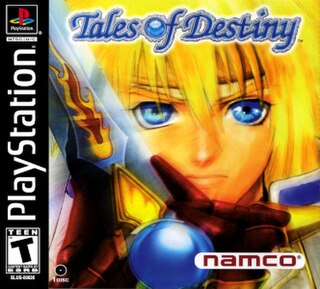 W
WTales of Destiny is an action role-playing game originally developed by Telenet Japan's "Wolf Team" as the second main title in Namco's "Tales of" series. Originally released for the PlayStation in Japan in December 1997, an English version was later made available in North America in September 1998. The game features many of the same development staff as its predecessor, Tales of Phantasia, including composers Motoi Sakuraba and Shinji Tamura, with character designs by series newcomer Mutsumi Inomata. Its producers gave it the characteristic genre name RPG of Destiny . A remake for the PlayStation 2 was released in November 2006, which was followed by an updated version called Tales of Destiny Director's Cut in January 2008, both exclusive to Japan. The remake was also given its own unique genre name by its producers as RPG called 'Destiny' .
 W
WTales of Destiny 2 is a Japanese action role-playing game, co-developed by Wolfteam and Telenet Japan, and published by Namco. It is the fourth main entry in the Tales series of video games, and a direct sequel to 1997's Tales of Destiny. It released on PlayStation 2 (PS2) in November 2002 in Japan, March 2003 in South Korea and August 2003 in China. The overseas versions were published by Sony Computer Entertainment. An updated port for the PlayStation Portable (PSP), developed by Alfa System, was released in February 2007, and March of the same year in South Korea. This version was published by Namco Bandai Games. Neither version has received a western release.
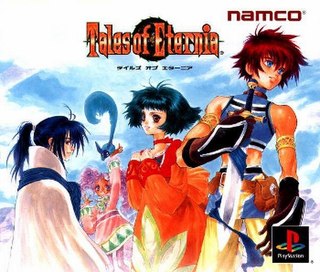 W
WTales of Eternia , known as Tales of Destiny II in its original North America release, is an action role-playing game published by Namco as the third main title in their Tales series. Initially released for the PlayStation in November 2000 in Japan, an English version was later released in North America in September 2001. It was developed by members of Telnet Japan's "Wolfteam", who had previously worked on its predecessors Tales of Phantasia and Tales of Destiny. The game's producers gave it the characteristic genre name RPG of Eternity and Bonds . A port was released for the PlayStation Portable handheld in Japan in March 2005, and the PAL region in February 2006.
 W
WTales of Phantasia is an action role-playing game originally developed by Wolf Team. It is the first title in Namco's Tales series. Initially released for the Super Famicom in December 1995, it was later ported to a number of other platforms, including a Japan-exclusive version for the PlayStation in December 1998 and a Game Boy Advance version published by Namco in Japan in August 2003 and later published by Nintendo in North America and Europe in March 2006, which marked the first time the game was officially available in English. A PlayStation Portable remake known as Tales of Phantasia Full Voice Edition followed in September 2006, featuring full voice acting during story scenes, which was later included with further enhancements as part of Tales of Phantasia: Narikiri Dungeon X in June 2010. The game's producers have given it the characteristic genre name Legendary RPG beginning with the PlayStation version, with the Full Voice Edition given the moniker Legendary RPG Embellished with Voices . An unofficial fan translation of the original Super Famicom version was released on February 12, 2001 by Dejap.
 W
WTales of Phantasia: Narikiri Dungeon is a role-playing video game for the Game Boy Color released by Namco on November 10, 2000, selling 136,000 copies. Tales of Phantasia: Narikiri Dungeon's characteristic genre name is Dungeon RPG . It is the first sequel in the Tales series, which normally does not have connected storylines. The story begins 205 years after the beginning of Tales of Phantasia.
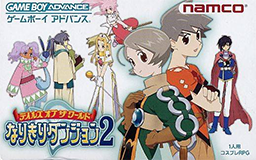 W
WTales of the World: Narikiri Dungeon 2 is a spin-off from the Tales RPG series made by Namco. The game was released exclusively in Japan for the Game Boy Advance on October, 2002. Tales of the World: Narikiri Dungeon 2's characteristic genre name is Cosplay RPG . While it succeeds Tales of Phantasia: Narikiri Dungeon, this was the first game in the Tales of the World series, which is known for featuring characters from various main Tales games.
 W
WTime Gal is an interactive movie video game developed and published by Taito and Toei Company, and originally released as a laserdisc game in Japan for the arcades in 1985. It is an action game which uses full motion video (FMV) to display the on-screen action. The player must correctly choose the on-screen character's actions to progress the story. The pre-recorded animation for the game was produced by Toei Animation.
 W
WValis II is a 1989 platform game developed and published by Telenet Japan for the TurboGrafx-CD. Ports for home computers, titled Valis: The Fantasm Soldier II, were released for PC-88, PC-98, MSX2, and X68000 in Japan later that year. It is the second title in the Valis series.
 W
WValis III is a platform game developed by Telenet Japan and originally released for the PC Engine CD-ROM2 in 1990 in Japan and the TurboGrafx-CD in 1992 in North America. It was also later ported to the Sega Genesis. Valis III is the third game in the Valis series and once again features the series' main protagonist Yuko as the lead character as she is also joined by her sister, Valna, and a young warrior named Cham who are new playable characters.
 W
WValis IV is a platform game developed and published by Telenet Japan for the PC Engine Super CD-ROM² in 1991 in Japan. A vastly different version titled Super Valis IV was published for the Super Nintendo Entertainment System in 1992 and was published by Atlus Software for North America.
 W
WValis: The Fantasm Soldier is a platform game developed by Wolf Team and published by Telenet Japan in 1986 originally for the PC-88 and MSX home computers. It is the first video game in the Valis series which stars a Japanese teenager named Yuko who uses a mystical sword called Valis to defend Earth and other worlds.
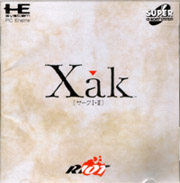 W
WXak I & II is a re-release of Xak and Xak II, a fantasy role-playing video game series Xak developed and published by the Japanese software developer MicroCabin and Telenet Japan's development team Riot. This set contains both the first two Xak series games back-to-back on one complete Super Cd-Rom^2 with enhanced graphics and sound. In a similar style to Ys Books I & II, also for the PC-Engine system, Xak II, the second game in the series picks up immediately as the first game concludes. Xak I & II was a Japanese release only and although the first two Xak games have been translated into English on the MSX2, the PC-Engine versions remain untranslated for now.